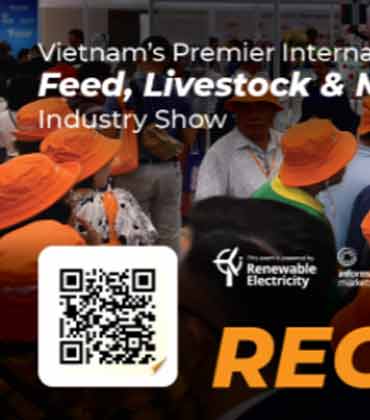THANK YOU FOR SUBSCRIBING
By Michael Coley, Food Safety & Quality Manager, Symrise AG
Leading Food Safety Through Standards And Strategy
By Inggrid Aryal, Oceania Food Safety Manager, Nestlé Oceania
Proactive Allergen Management for a Safer, Global Supply...
By Marcello Pezzi, Product Safety Director, DS Smith
Chemical Detection Analytical Advancements in Paper...

Navigating the Future of Food Safety
Michael Ciepiela, Director of Food Safety and Quality Assurance at The Spice Lab

 Michael Ciepiela, Director of Food Safety and Quality Assurance at The Spice Lab
Michael Ciepiela, Director of Food Safety and Quality Assurance at The Spice LabThrough this article, Michael Ciepiela shares his journey in food safety and quality assurance, emphasizing the growing significance of AI and blockchain technology in the industry. He discusses The Spice Lab's commitment to rigorous certification standards and the importance of transparency in food safety. Michael also provides insights into adopting emerging technologies while highlighting the need for cross-departmental collaboration to ensure effective decision-making.
Insights into My Professional Journey at The Spice Lab
Upon graduating with my Biology degree, I applied for every science-related job available, unaware that food safety and quality assurance/control roles existed. Now, I recognize these areas' significant opportunities and the focus they deserve. I began my career as a QA technician, quickly applying my college knowledge to real-world scenarios.
Realizing that remaining stagnant in my role wasn’t for me, I proactively researched and applied for higher-level positions, eventually securing a supervisory role in a different food sector, which broadened my experience. Many colleagues were content with their roles, but I aspired for more. A significant milestone came when I took on a supervisory role at The Kraft Heinz Company, which led to my promotion to Quality Manager.
While I enjoyed my time there, I wasn’t happy with my living situation, prompting a lateral move to a new position in South Carolina. This decision proved pivotal, thanks to my mentor, who encouraged me to pursue certifications, attend training, and speak at conferences, which eventually led to publishing articles in industry magazines.
These opportunities greatly enhanced my skills and visibility, allowing me to leverage my experience across different companies and food sectors. Ultimately, I believe that seizing every opportunity is crucial for career advancement.
Significant Trends and Advancements Impacting the F&B Industry
The most significant trend is undoubtedly Artificial Intelligence (AI), but I also want to emphasize the increased availability of information today. Consumers are becoming much more discerning about what they eat—and rightfully so. Food processors and manufacturers must adhere to the highest food safety standards.
Working with various grocers and seeing the extensive layers of compliance that products must meet before reaching store shelves is encouraging. Regarding AI, tools like ChatGPT are practical support tools but shouldn't be relied upon entirely. My education and experience, combined with ChatGPT, have taught me that knowing what to ask and how to utilize the information provided is essential.
For instance, if you ask AI to “write me a Standard Operating Procedure (SOP) for GFSI compliance,” the output may not meet all compliance standards. However, leveraging your food safety training and experience allows you to guide the AI's assistance, filtering out misinformation and creating a compliant document.
“Seizing every opportunity is crucial for career advancement in food safety, where continuous improvement and innovation are essential for meeting the highest standards.”
Challenges and Preparations for the Future of the F&B Landscape
While not necessarily a challenge, enhancing continuous improvement in food safety could greatly benefit from implementing blockchain technology for traceability. For instance, in produce, the ability to trace raw materials back to the exact field they were harvested from—or, in the case of meat, identifying the farm where an animal was raised and its living conditions—is a crucial next step in ensuring food safety.
Organizations like Global Barcoding, powered by GS1, are making significant strides in this area. They are developing intelligent labels that, when scanned by consumers, provide detailed information about a product’s origin and its journey through the supply chain.
This level of transparency is, in my opinion, an essential aspect of advancing food safety.
Quality and Safety Frameworks at The Spice Lab
The Spice Lab operates under the SQF (Safe Quality Food) umbrella as part of the Global Food Safety Initiative (GFSI) certification standards. SQF has excelled in ensuring that every aspect of our operation—from production to packaging—meets stringent safety and compliance requirements. Through my experience with various GFSI standards, I've observed an increasing synchronization of regulations, providing more explicit guidance on what companies must adhere to for safe and responsible manufacturing and sales.
In addition to our SQF certification, The Spice Lab is proud to hold Organic and Kosher certifications, demonstrating our commitment to maintaining the highest standards of quality and compliance. These certifications ensure the safety and integrity of our products and enable us to cater to a broader range of consumer needs and preferences.
Adopting Emerging Technologies: Advice and Considerations
The Spice Lab utilizes QAD RedZone, which has proven highly effective for our compliance and record-keeping needs. This software has streamlined documentation review, allowing us to quickly search for and retrieve necessary information. For instance, mock recall challenges now take significantly less time, thanks to the system's electronic search capabilities.
However, a potential pitfall in this area is the proliferation of similar systems from various companies, making it challenging to select the right one. Choosing the appropriate platform for quality compliance or ERP is critical. I've experienced the frustration of working with a company that chose the wrong system; the training was ineffective, and it added little real value.
To avoid these issues, engaging in cross-departmental collaboration is essential when making company-wide decisions that affect multiple stakeholders. This approach ensures that the selected system meets the needs of everyone involved.
Read Also














